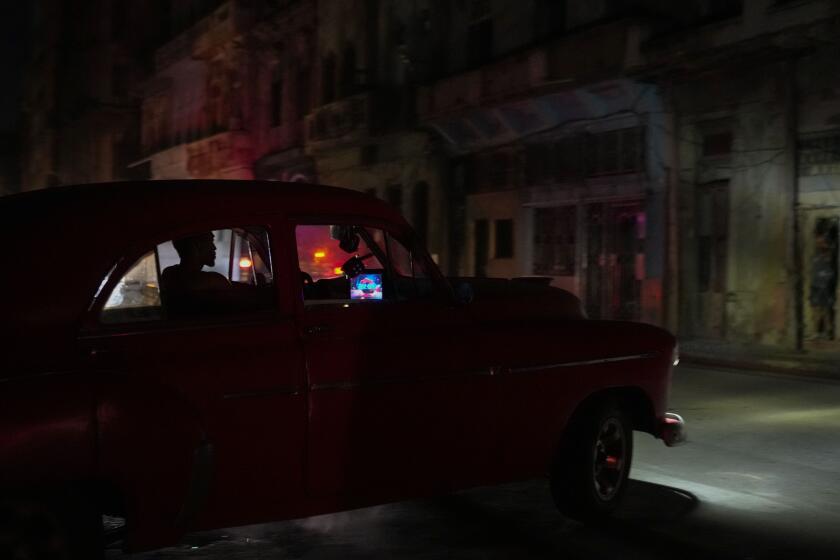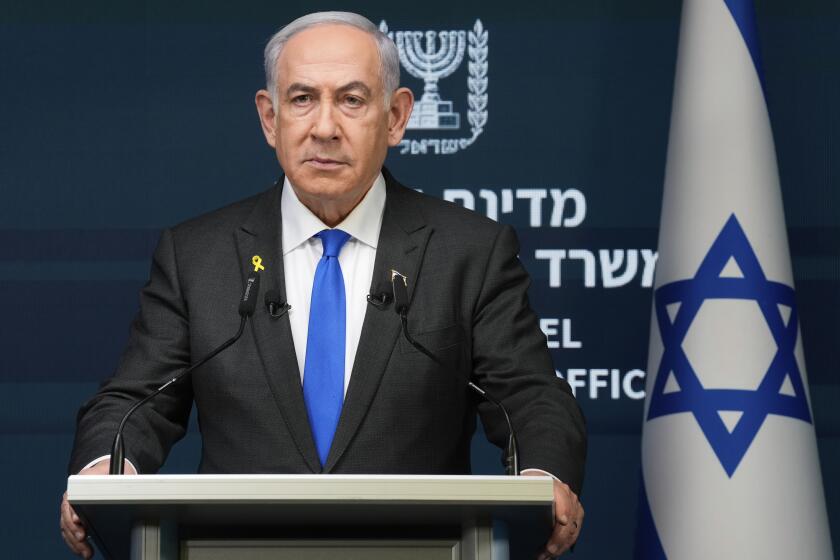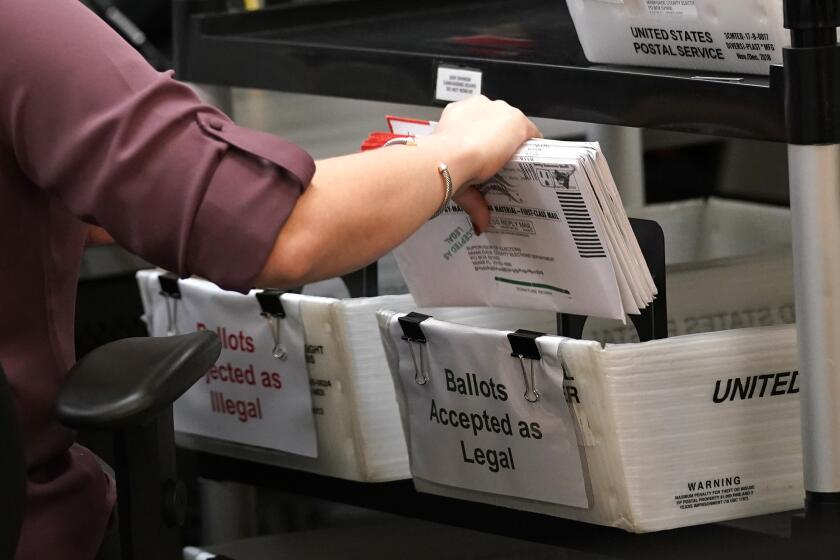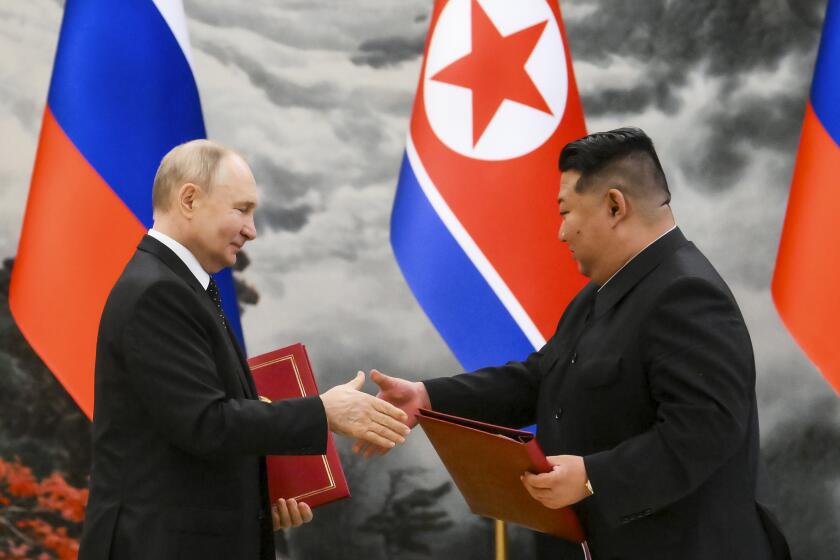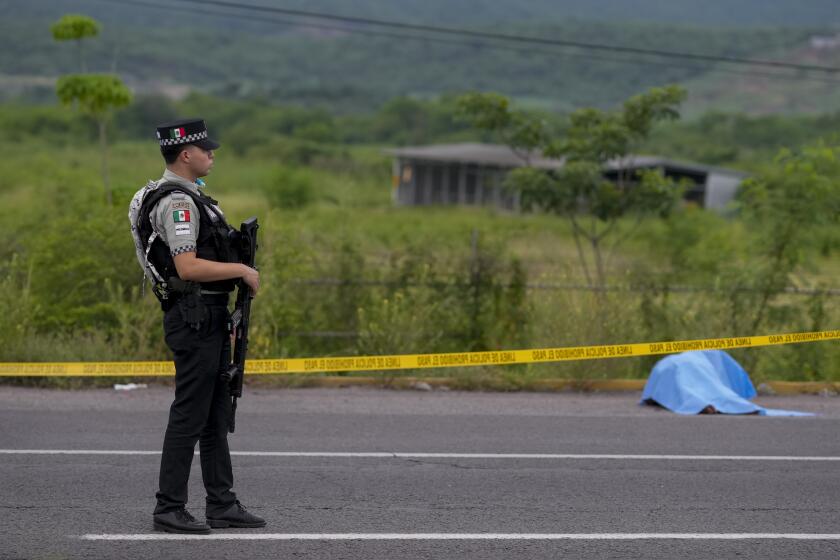Soviets Take Steps to Accept On-Site Inspections
The Soviet Union took two modest steps here recently toward accepting on-site inspection of its atomic power plants and of any conventional force cuts approved by both sides, moves that may have potentially great significance for the nuclear arms talks in Geneva.
Like most Soviet proposals on the highly charged issue of verification, Moscow’s moves are well-hedged to severely limit the scope and depth of the intrusive monitoring procedures.
But as one Western diplomat said here, “The Soviets have acknowledged that there are legitimate reasons for on-site inspection in certain cases. Five years ago, it would have been outlandish to anticipate they would do so. Something more will come out of this, if we just keep pushing them.”
The Reagan Administration has made verification a high priority for any new nuclear arms agreement, in line with its repeated allegations of Soviet cheating on past treaties.
Tower’s Position
“Some intrusive form” of verification will be needed to police any future agreement on strategic offensive nuclear weapons, according to John Tower, the former Texas senator who is now chief U.S. negotiator on those weapons in Geneva.
The kind of inspection required to monitor nuclear arms agreements and that for ordinary soldiers and tanks are quite different in many respects, but not in all.
For example, as the Soviets shift from fixed-based to mobile nuclear missiles, one way to keep count of them is to restrict the missiles to a given land area that can be entered or exited only by way of established checkpoints. This is a concept that the Soviets have already proposed here for keeping track of Soviet troops and equipment movements.
The Soviets also have agreed to open some of the older atomic power plants on its territory to inspectors from the International Atomic Energy Agency, whose headquarters are here.
Advanced Reactors Off Limits
Its more advanced reactors, including those that manufacture (or “breed”) plutonium that can be fabricated into bombs, will be kept off limits to the IAEA. The Soviets will also bar inspectors from new plants as they begin operation.
Some dubious Western officials here and in Washington regard Soviet acceptance of international inspection as largely propaganda to suggest Moscow’s willingness to cooperate with verifying future Geneva accords. The move, they note, is a long-overdue nod toward full cooperation with the Nuclear Non-proliferation Treaty and with big-power efforts to prevent the spread of nuclear weapons to Third World nations.
But it was nonetheless considered a significant step toward allowing foreign inspectors on Soviet soil, a concept the Kremlin has resolutely opposed in the past. As a secret society, the Soviet Union has more to lose than Western nations from international policemen wandering on its territory.
More Binding Version
Last month, too, the Soviets presented to the East-West troop reduction talks here a more binding version of an earlier proposal that envisages verification of troop withdrawals by Western observers at selected checkpoints, as well as eventual on-site inspection to ensure that negotiated force levels are not being violated.
These negotiations, formally called the mutual and balanced force reduction talks or MBFR, have been going on for 12 years. Like a stately Viennese waltz, they often take two steps sideways and a half-step back for every forward step, yet over the years, they have made some steady progress, such as agreeing on common ceilings of 900,000 men--700,000 soldiers and 200,000 airmen--for both the Warsaw Pact and the North Atlantic Treaty Organization.
And while obviously peripheral to the main nuclear arms talks, these negotiations have broken new ground with the Soviet agreement in principle to on-site inspection.
As a measure of its significance, State Department officials fought hard last year, through three National Security Council meetings, for U.S. acceptance of the earlier Soviet proposal, primarily to lock the Soviets onto the on-site inspection provisions even though the proposal was inadequate in its details.
Pentagon Wins Out
In the end, the Pentagon won, however, and the West did not take up the Soviet offer then. But by repeating it now, the Soviets have offered the Reagan Administration another opportunity, one that may get a more positive response now that the talks in Geneva are under way, officials say.
Specifically, the Soviets last year proposed that the United States withdraw 13,000 of its troops from West Germany while Moscow would pull back 20,000 men to its territory, as a political gesture without formal or binding agreement.
It also called for a freeze on troop levels of all nations on the central front in Europe, which includes East Germany, Czechoslovakia and the Soviet Union on one side and Belgium, Britain, Canada, West Germany and the United States on the other.
Monitoring Checkpoints
The third and most important part of the initial Soviet proposal was that a reduction by all nations with forces in the area should be monitored by inspectors of the other side at “three or four” checkpoints--road and rail junctions--through which large troop movements must pass.
After those reductions, there could be “voluntary” on-site inspections of each side’s territory in which inspectors would ask to visit a specified area, according to the proposal. The Soviets said that such requests would normally be granted but that the host side would retain the option not to extend the invitation.
From the U.S. perspective, there were many loopholes in the Soviet verification proposal. The West wants verification earlier in the process, with a firm number of inspections that are mandatory, not voluntary.
The proposed size of the withdrawals is also an issue, with the West insisting that the Soviets pull back 30,000 men, rather than 20,000, because they could be returned to the area far faster than the 13,000 U.S. troops, who would have to be withdrawn to the United States.
A Real Departure
But the offer represented a real departure from the Kremlin’s flat opposition to all forms of on-site inspection. Now, Moscow has modified its offer to propose that the initial U.S.-Soviet troop withdrawals and a subsequent freeze would be legally binding and to offer to set up entry-exit checkpoints in the first stage, rather than in the later stage, of any agreement.
Several diplomats here believe that the Soviets are now prepared to accept additional verification measures in the initial withdrawal stages, and that the West should now aim at an agreement to have on-site inspectors fully in place by the time large-scale force cuts are negotiated.
More to Read
Sign up for Essential California
The most important California stories and recommendations in your inbox every morning.
You may occasionally receive promotional content from the Los Angeles Times.




